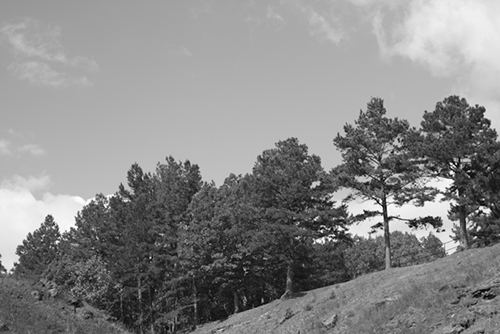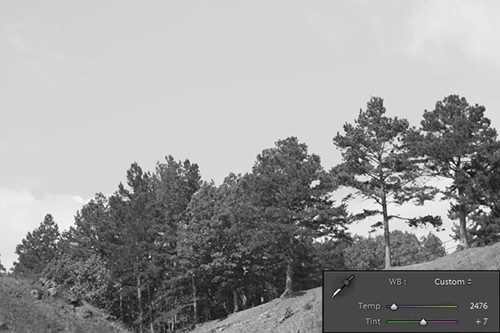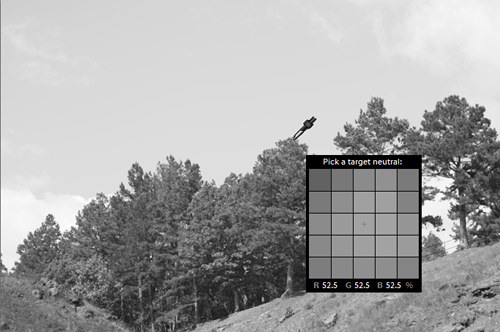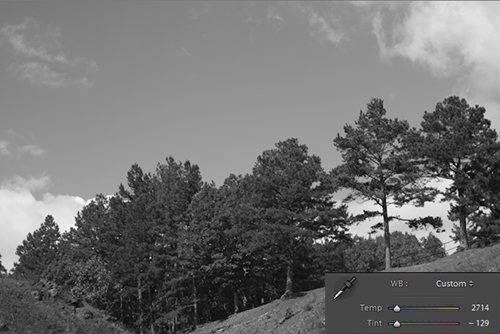When working with a monochrome conversion it is all too easy to rely simply on the Grayscale Mixer in Lightroom to help you achieved your desired tone. The Grayscale Mixer does a fantastic job of allowing you control over the tonality of your image, but only as it relates to a particular color channel.
Sometimes dramatic adjustments to the mixer can impart negative effects upon your image, and sometimes you want to maintain a simple, natural conversion with a balance across all the colors.
An overlooked tool in your Monochrome tools is the White Balance tools, Temp and Tint. Making White Balance adjustments is a simple and quick way to wrangle your image into black and white goodness.
Many will simply ignore White Balance, thinking it would have little impact on their monochrome conversions, thinking it simply was used to fix color casts. However, you can used Temp and Tint to generate a custom color shift for your image, which alters the effect of the monochrome conversion.
Essentially utilizing the White Balance tools creates a virtual filter for your image, generating a color shift, much like a filter on your lens would do. The White Balance settings are rendered in Lightroom and ACR before the data converts to monochrome, so the result would be the same as a colored filter on a lens hitting film.
The color of the image changes before hitting film, changing the film response. Same thing here.
So basically, here is how it works. Simply convert your image to monochrome in your preferred manner.

Now just play around with the Temp slider a bit. As you move it around, you will see some dramatic changes.

Alternately you can also use the Temp Eyedropper and select random points in your image to set white balance to. There is little correlation to where you click and what you get, as you are changing color information, but it is another way to change things.

After you find a Temp setting that shows some promise, you can use Tint to further refine it. Tint tends to darken or lighten the image, but not in any normal manner. It is in no way linear, much like the Temp setting.

White balance is no replacement for either the Grayscale Mixer or physical colored filters on your camera when shooting for black and white. White balance is merely another tool that you can use to harness your images and control the effects of monochrome conversion.
The advantage to using White Balance in your monochrome workflow is that you can further adjust your conversion without having to mess with individual color channels.
Just remember, White Balance will overlay a color cast upon your image that will cause one Grayscale Mixer slider to have more control over the appearance of your image. If you know what color cast you are applying you can compensate, but if not, you are just playing a guessing game.


